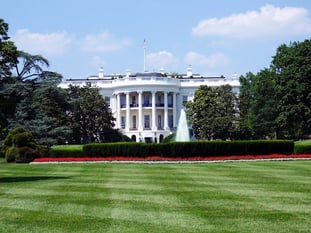Compliance & Legal | Discrimination | Education
What School HR Pros Should Know About Title IX (& How It Has Changed)
Read Time 8 mins | Dec 4, 2023 | Written by: Frankie Kourtis

Sexual harassment is far from just a workplace issue. On the contrary, discrimination and harassment presents itself early on and within the education system. As such, Title IX was enacted to protect students’ rights and to ensure a safe and just place for study.
What is Title IX?
Passed as part of the Education Amendments of 1972, Title IX exists so that “no person in the United States shall, on the basis of sex, be excluded from participation in, be denied the benefits of, or be subjected to discrimination under any education program or activity receiving Federal financial assistance.”
Title IX is, in essence, a federal amendment from 1972 that prohibits sex-based discrimination in educational institutions that receive federal funding. While the original rule does not comment on sexual harassment, many things have changed and updates have been made to the law since 1972. Title IX is now a cornerstone piece of legislation in directing how colleges and universities respond to sexual misconduct claims.
It’s true that Title IX also impacts recruitment, admissions, athletics, and employment within a school system, but the bulk of attention has recently been placed on sexual harassment and discrimination complaints on campus. It’s important that a school's HR staff have an implementation plan in place to uphold Title IX requirements or risk penalty of noncompliance.
How Has Title IX Changed?
 Much of the evolution of Title IX is centered around protecting students from sexual harassment and discrimination. In the 1980s, Federal courts held that sexual harassment constitutes a form of sex discrimination under a different piece of legislation, Title VII of the Civil Rights Act. By the 1990s, courts applied similar rules to schools under Title IX.
Much of the evolution of Title IX is centered around protecting students from sexual harassment and discrimination. In the 1980s, Federal courts held that sexual harassment constitutes a form of sex discrimination under a different piece of legislation, Title VII of the Civil Rights Act. By the 1990s, courts applied similar rules to schools under Title IX.
The Obama Administration expanded the Title IX guidance in the “Dear Colleague Letter” in 2011 and a more detailed guidance in 2014 to increase institutional responsibilities to respond to accusations of sexual assault or harassment. The Trump Administration rescinded those rules and put forth new regulations that went into effect in 2020 and are still the current interpretation of Title IX with regard to sexual harassment in colleges and universities.
The changes to Title IX guidelines and standards that Betsy DeVos and the Trump administration passed through the U.S. Department of Education’s Office of Civil Rights (OCR) were intended to ensure “. . .that every student can learn in a safe and nurturing environment,” while also leveling the field between alleged survivors and assailants in order to create a “workable, effective and fair system.”
However, the 2020 changes are also noted to have narrowed the pool of cases in terms of schools being held accountable for handling only those sexual misconduct cases that take place on campus. Other notable changes to the regulations include:
- The current definition of sexual harassment is: “Unwelcome conduct on the basis of sex that is so severe, pervasive and objectively offensive that it denies a person access to the school’s education program or activity.”
- Students are expected to report sexual misconduct to “an official who has the authority to institute corrective measures” in place of a trusted peer, or campus adviser, such as a building RA or academic adviser.
- Colleges are required to hold live hearings where both sides would cross-examine testimony and would require survivors to speak with designated school officials.
Reactions to the Current Version of Title IX
After the changes were announced in 2018, there was a public comment period opened by the government that concluded in February 2019. The bulk of the comments came from the ACLU and campus advocacy groups across the country.
Much of the commentary and rhetoric has been fierce, and the proposed changes have resulted in intense debates across campuses in the U.S., one of which is the position of the ACLU that the proposed changes may make students less likely to come forward or report abuse since the mandated procedures open them up to public scrutiny and the sharing of minute details of assault, harassment or misconduct in reported cases to a vast, and often unknown, audience of people.
Examples of vocal opponents abound, but Elizabeth Tang, an Equal Justice Works Fellow at the National Women’s Law Center, commented in response to the proposed limiting of the scope of higher-education institutions’ responsibilities, “Sexual harassment that happens off campus and outside of a school activity is no less traumatic than on-campus harassment. The negative impact on the student’s education is the same either way if the student is forced to see their [sic] harasser regularly at school.”
State and Regional Governments Have Taken Action
Some state and regional legislatures anticipated that the government would, in turn, formally slacken broader measures addressing these issues, so they started pushing anti-sexual harassment legislation to get ahead of the game.
For example, the state of New York created new anti-sexual harassment laws applicable to all employers, including the New York City Stop Sexual Harassment Act, a comprehensive and sweeping law set to both address and prevent gender-based sexual harassment in the workplace. California also responded by enacting anti-harassment legislation, and started offering model policies and training, including some that specifically target the prevention of harassment. Some states have continued to enact robust laws that provide victims with greater protection than is currently provided under federal law, or Title IX guidelines for that matter.
The Future of Title IX Regulations
The Biden administration proposed a new revision of Title IX rules in July 2022 (view the notice of proposed rulemaking or the fact sheet summing up proposed changes).
The intention of the new rules would be to address some of the criticisms of the 2020 version’s shortcomings. Under the current Trump/Devos-era guidelines, schools only recognize an incident as sexual harassment if it’s “severe, pervasive and objectively offensive” — a standard that’s higher than those used in claims of workplace sexual harassment. Biden’s proposed changes would lower this definition to the previous “severe or pervasive” standard. It would also include off-campus incidents once again, and schools would be required to provide “robust” supportive measures.
These rules would also add protections for LGBTQ+ students and pregnant and parenting students. Other hot-button cultural issues, such as gender issues and students’ eligibility for athletic teams, are likely to be formally addressed in any final rules passed for the next Title IX update.
The final new rules were initially supposed to be issued in May of 2023, but the department delayed them, and the current timeline for the new rules proposal makes it unlikely any changes will be in place before the 2024-2025 school year at the earliest.
3 Final Thoughts That Matter For Title IX Compliance
- Schools Must Have a Title IX Coordinator. A designated member of your HR staff should be the point person for Title IX compliance and to facilitate issues or grievances that arise. While this individual may have other responsibilities within the school, those tasks cannot impede on their ability to uphold Title IX requirements or face potential noncompliance. This person’s contact information should be readily available to students and parents.
- A Sexual Discrimination Policy Must Be in Place and Acknowledged. Whether it’s widely distributed or easily accessible, school policies and procedures relating to sexual harassment and discrimination complaints on campus must be readily available. This should include specifics on prohibited behaviors and treatment and discuss policy violations.
- Have a Grievance Plan in Place. There should be a clear and concise plan that is enacted the minute a Title IX complaint is documented. This will ensure the grievance is processed and investigated by HR with the utmost accuracy to ensure a just resolution. In addition, mitigation training of staff to identify potential risk areas can prevent sexual discrimination, harassment, and exploitation on campus before it occurs.
The paper trail that accompanies campus complaints and investigations can be intimidating though necessary to resolve issues. While many schools rely on spreadsheets and manual entry procedures to document Title IX complaints, often these are less than efficient to handle the accuracy or discretion for privacy. 
Keep Title IX Issues and Grievances Organized
LaborSoft is the number one partner for configurable, cloud-based technology that makes it easy for you to document and archive all supporting materials for Title IX issues and grievances. Our employee relations analytics, case management workflows, and our central repository of documentation streamlines case management to mitigate risk of operational bottlenecks, costly lawsuits, and legal ramifications stemming from HR issues and complaints. With a secure, centralized database, your Coordinator can better manage compliance requirements and oversee school policies.
Contact us for a customized demonstration and learn how LaborSoft can help you improve communications, build a more collaborative, safe, and supportive campus or workplace, while reducing the likelihood of costly litigation.
*This blog was originally published on 4/5/2018 and was updated on 12/4/2023.


